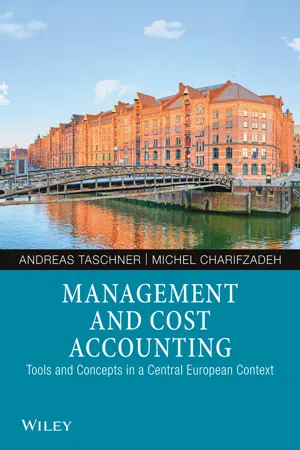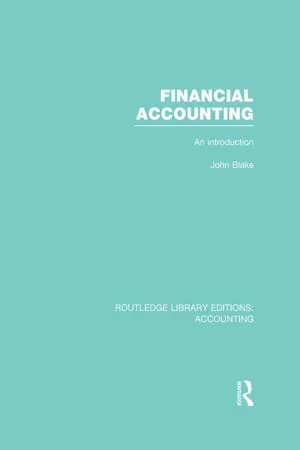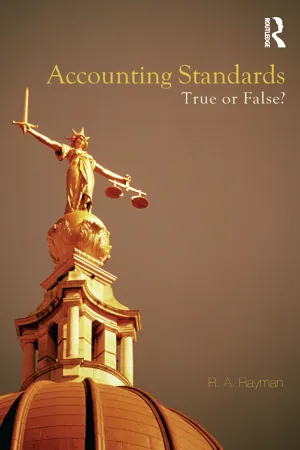Economics
Unit of Account Costs
Unit of account costs refer to the expenses associated with the process of pricing and accounting in a particular currency. These costs can include the time and resources required to convert and compare prices across different currencies, as well as the potential for errors and discrepancies in financial reporting. In essence, unit of account costs represent the challenges and inefficiencies that arise from using multiple currencies for economic transactions.
Written by Perlego with AI-assistance
Related key terms
3 Key excerpts on "Unit of Account Costs"
- eBook - ePub
Management and Cost Accounting
Tools and Concepts in a Central European Context
- Andreas Taschner, Michel Charifzadeh(Authors)
- 2020(Publication Date)
- Wiley-VCH(Publisher)
Indirect costs Indirect costs are related to the particular cost object but cannot be traced to it in an economically feasible way.Marginal costThe additional costs incurred when producing one additional unit of output.Opportunity costThe foregone benefit of the best possible alternative use of a resource.Outlay costA cost item that leads to a corresponding cash payment.PaymentAny decrease of liquid funds (cash outflow) of the company.Period costCost items that are treated as an expense in the period they occur.Predicted costsThe expected future cost that is assumed to be mainly beyond the company's influence.ProceedAny increase in monetary assets of the company (cash plus receivables minus obligations).Product costThe cost of producing outputs. When output is sold, product cost determines the cost of sales. When the output is put in stock, product costs are used to determine inventory values.ReceiptAny increase of liquid funds (cash inflow) of the company.RevenueAny increase in economic benefits that is due to regular company operations and therefore leads to an increase in required assets.Standard costThe intended future cost level that is achievable under efficient operating conditions.Step-fixed costA cost item that remains constant within a certain activity range and increases to a next-higher level, if the activity level increases beyond that activity range.Sunk costCost that has already been incurred and that cannot be changed by any future decision.Unit costThe average cost per unit of output. Unit cost is determined by relating total cost to the total output quantity.Variable costVariable costs depend on the output volume and therefore change in line with the company's activity level.REVIEW QUESTIONS
- R1.Give examples of how management uses unit costs for analysis.
- R2.
- eBook - ePub
Financial Accounting (RLE Accounting)
An Introduction
- John Blake(Author)
- 2013(Publication Date)
- Routledge(Publisher)
11INFLATION AND THE ACCOUNTANTObjectives
The basic objective of this chapter is to offer a brief review of the problems of adapting the traditional accounting framework to recognize the effects of inflation. Specifically considered are:1The impact of inflation on traditional historical cost accounts.2The current purchasing power (CPP) approach to inflation accounting.3The concept of Value to the business’.4Current cost accounting (CCA).5The relative merits of CPP and CCA.The impact of inflation
Historical cost accounts express all items in monetary amounts, as measured at the date when each item first enters the accounts. In times of inflation the ‘value’ of money is falling, so that the monetary unit of measurement does not have a constant value. In times of rising prices there are four major effects on the significance of the accounts:1Expenditure is normally incurred earlier than the related income is received, so that it will be measured at an amount which understates its ‘value’ at the date of consumption. Thus profit will be overstated.2 - eBook - ePub
- R.A. Rayman(Author)
- 2013(Publication Date)
- Routledge(Publisher)
Tweedie and Whittington (1984) . What follows here is no more than a brief outline.Inflation Accounting: The Basic Alternatives
According to the traditional textbook analysis, there are two distinct accounting problems arising from the phenomenon of changing prices. It follows, therefore, that there are two distinct solutions.-
Problem number one:
- Changes in the general level of prices may cause the monetary unit of account to become ‘out of date’ in terms of purchasing power.
-
Solution number one:
- The unit of account should be ‘updated’ by switching from the nominal monetary unit to the current purchasing power equivalent by using an appropriate general price index (GPI).
-
Problem number two:
- Changes in the specific prices of items actually acquired may (if there is a ‘time-lag’ before use or sale) cause costs charged as expenses in the profit and loss account and costs included as assets in the balance sheet to become ‘out of date’.
-
Solution number two:
- The valuation basis should be ‘updated’ by switching from historical cost to the current cost equivalent by using appropriate specific price indices (SPIs).
Depending on which, if any, of the solutions are implemented, there are four basic alternative systems of accounting. Their main features are summarized in Table 5.3
Index pages curate the most relevant extracts from our library of academic textbooks. They’ve been created using an in-house natural language model (NLM), each adding context and meaning to key research topics.


